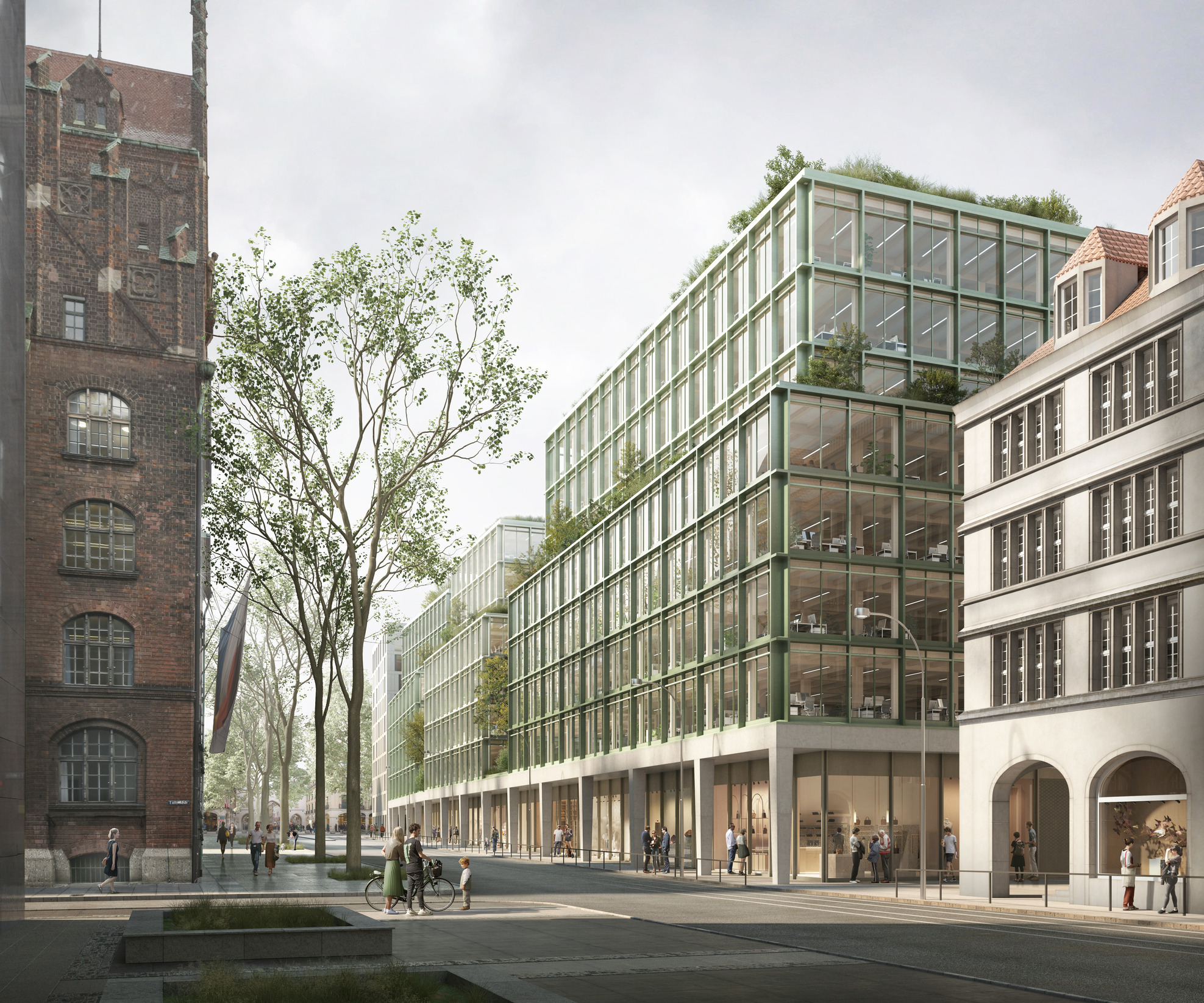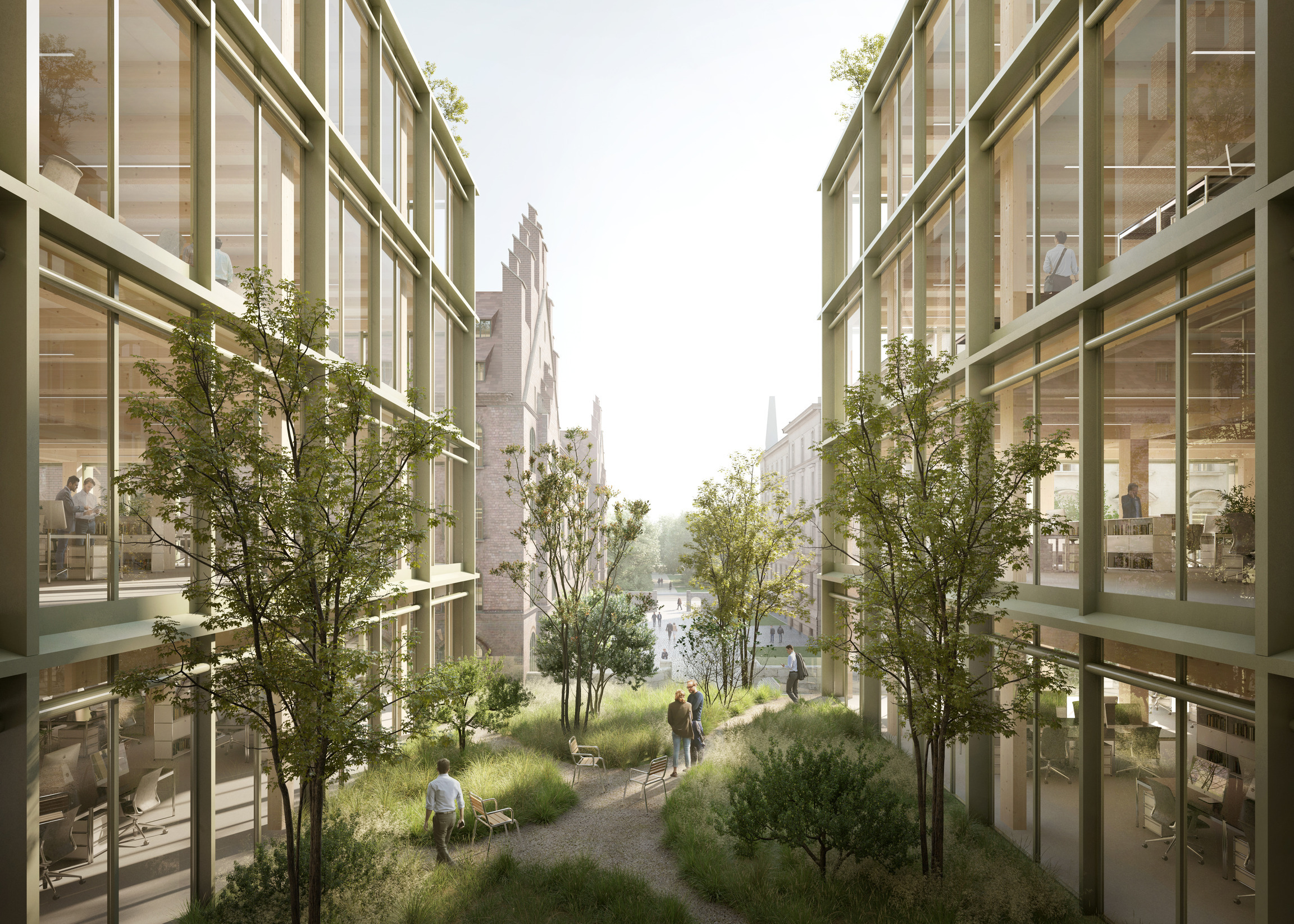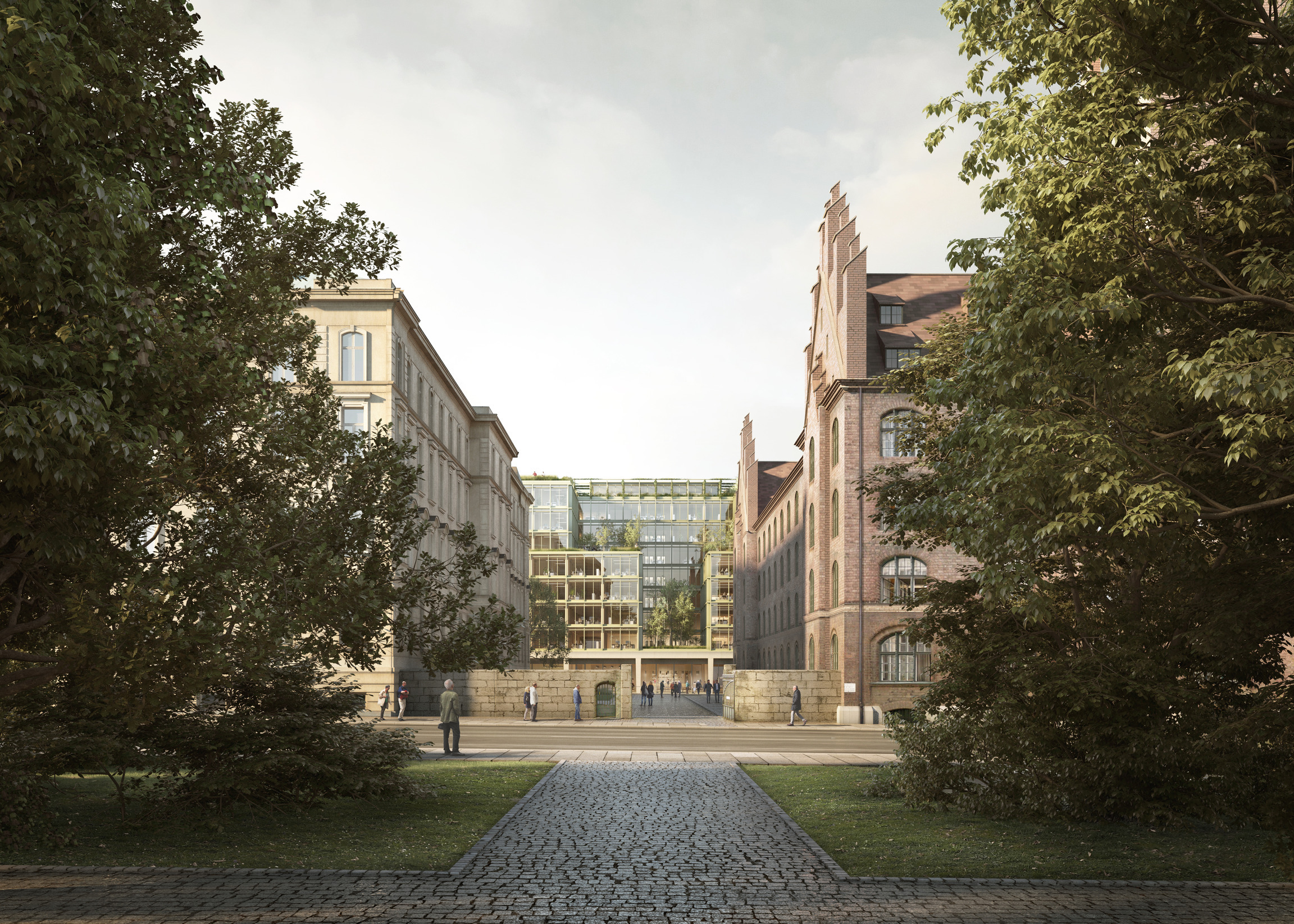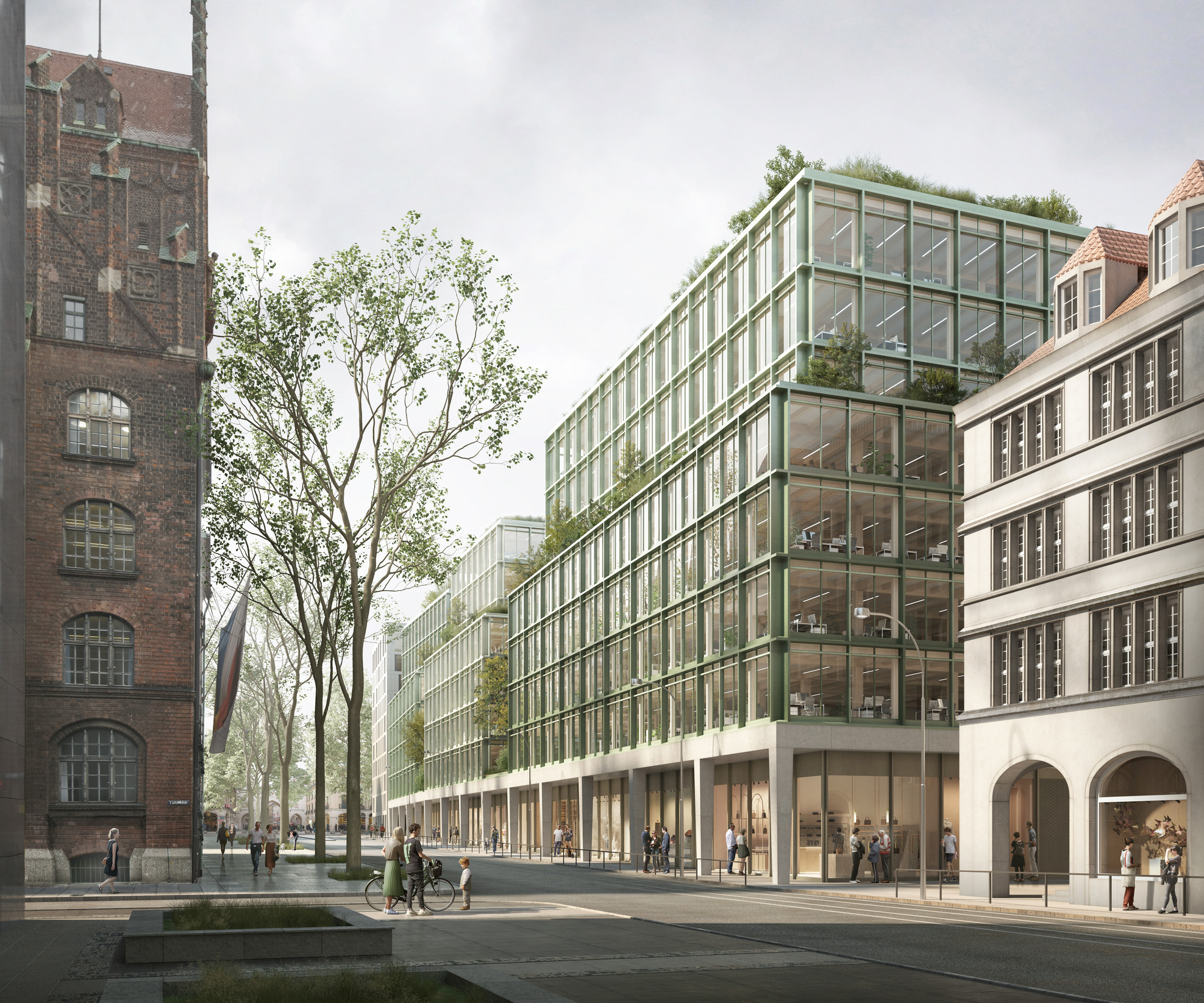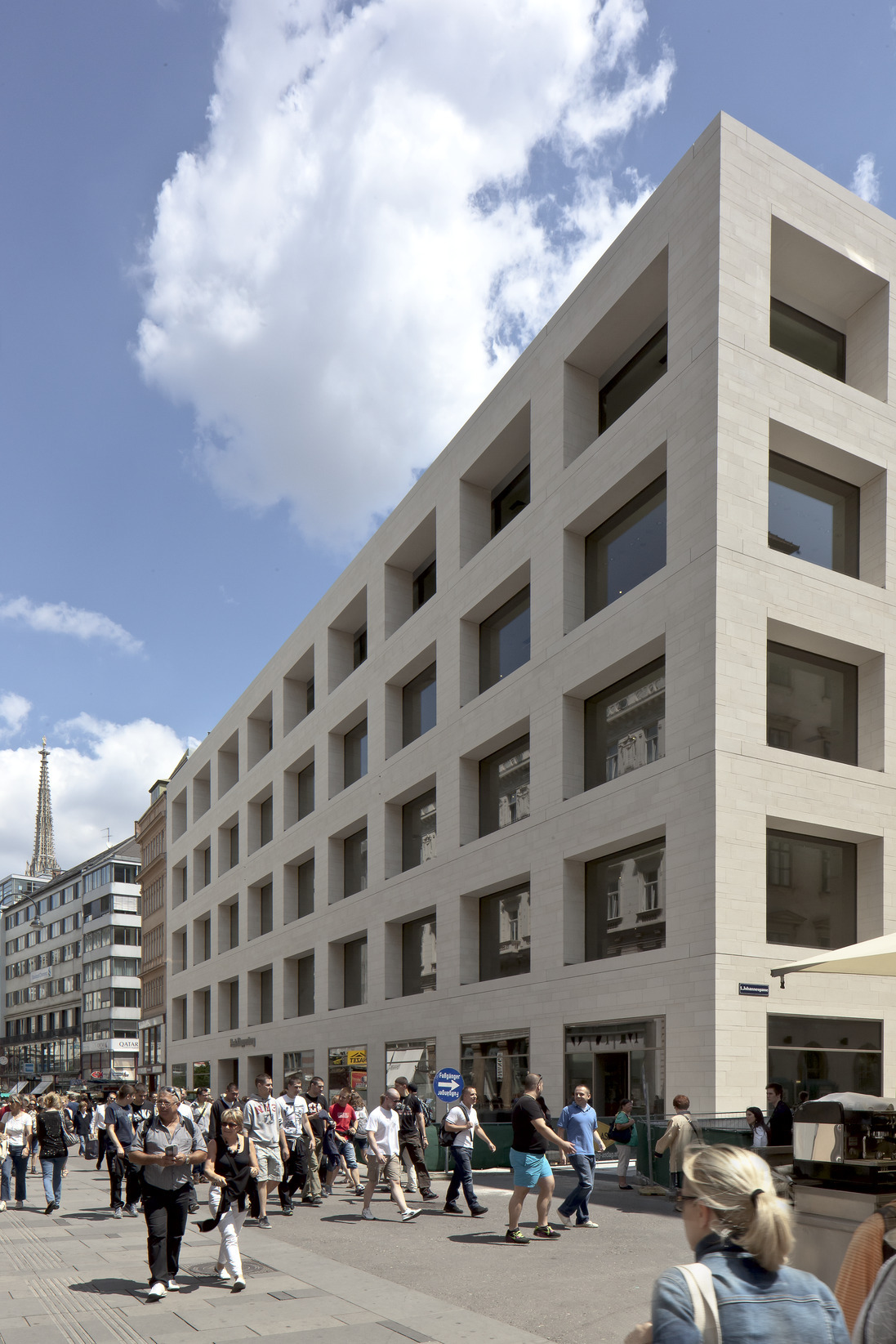Development Schützenstraße
Munich, Germany
2021–
A new mixed-use complex is to be built between Munich's main railway station and the Karlsplatz, a square located in the heart of the city, creating a lively, urban atmosphere with its functional diversity and generous public green spaces.
The area around the site is defined by two main urban principles: traces of the original mediaeval small-scale structure can be found in the city structure, as well as the rational, representative scale of the imperial capital. The design by David Chipperfield Architects Berlin reflects these two principles and combines them in a new, metropolitan structure. The result is a building representing an innovative typology that allows urban density to be generated while at the same time creating diverse urban open spaces in the public realm.
The permeable ground floor, a wide-spanning, cross vault structure resting on conical pillars, connects the streets Prielmayerstraße and Schützenstraße via two passages. On both streets, arcades invite passers-by to visit the building with its diverse public programme at ground floor level, including cultural facilities, shops, cafés and restaurants. Green open spaces with seating areas are not designed as interior courtyards, but open up to the street space, benefiting everyone who works and visits the building.
Building volumes of varying scales, which become increasingly smaller towards the top, are situated above the ground floor with its visible structure made of recycled concrete. These volumes initially follow the curved street lines up to the eaves height of the surrounding buildings. Above this, the structures are recessed towards the centre of the block and are freely arranged like dormers. This composition generates leafy terraces and an intensively planted, publicly accessible roofscape at several levels.
The façade is structured by slender, green anodised aluminium profiles that are fully recyclable. The office floors located on the upper floors have a timber hybrid construction, allowing for flexible layouts ranging from conservative cubicle offices to modern office landscapes with large, interconnected areas. The high flexibility of the floor plans, energy and resource efficiency as well as a high level of user comfort form the basis of the holistic sustainability concept.
Data and credits
- Competition
- 2021–22
- Project start
- 2022
- Gross floor area
- 85,000 m2
- Client
- Signa Real Estate Germany (2021–23)
- Architect
- David Chipperfield Architects Berlin
- Partners
- David Chipperfield, Harald Müller, Martin Reichert, Alexander Schwarz
- Project architect
- Ivan Dimitrov (Competition), Nicolas Kulemeyer (Preparation and brief, Concept design), Christoph Emenlauer (Preparation and brief to Developed design)
- Project team
- Michael Ahlers, Wolfgang Baumeister, Lotte Becher, Marlen Beckedahl, Leander Bulst (Design coordination), Ulrike Eberhardt, Marta De Filippis, Katharina Gahl (Design coordination), Moritz Hagemeier, Lara Hoelscher, Kevin Losio, Anton Mothwurf, Iris Pablo Garcia, Hubert Pawela, Maxi Reschke, Torsten Richter, Magdalena Schwalke-Sauer, Joshua Saunders, Luigi Serra, Matthijs Sioen, Pilar Villamor, Anton Wernik
- Competition team
- Ulrike Eberhardt, Achim Eilmsteiner, Luisa Fiedler, Guido Porta, Thorsten Rothmann, Franziska Rusch; Graphics: Kerstin Bigalke
- Quantity surveyor
- BAL Bauplanungs und Steuerungs GmbH, Berlin
- Landscape architect
- Atelier Loidl Landschaftsarchitekten GmbH, Berlin (Competition, Concept design)
HKK, Frankfurt (Developed design) - Structural engineer
- wh-p GmbH Beratende Ingenieure, Berlin (Competition)
Schüßler-Plan Ingenieurgesellschaft, Düsseldorf - Services engineer
- Ingenieurbüro Hausladen GmbH, München (Competition)
ZFG-Projekt GmbH, Baden - Façade consultant
- Knippershelbig, Stuttgart (Concept design)
IFM, Ilsfeld (Developed design) - Fire consultant
- Dipl.-Ing. Peter Stanek, Berlin (Competition)
Kaupa Ingenieure, Windorf - Lighting consultant
- Kardorff Ingenieure, Berlin
- Energy and sustainability consultant
- Transsolar Energietechnik GmbH, Stuttgart
- Visualisations
- Filippo Bolognese Images
